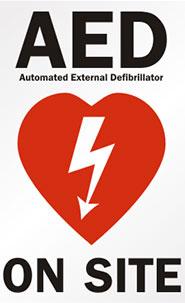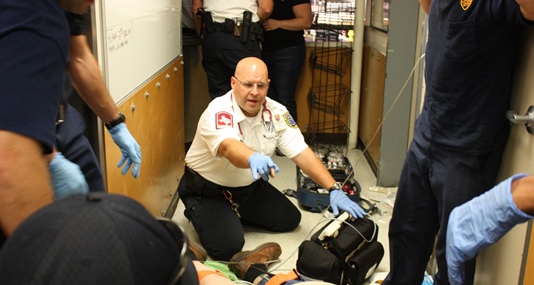Clinical Performance Improvement: Improving Quality and Patient Safety for patients, families and EMS System providers
Performance Improvement (PI) of the EMS System includes prospective, retrospective and concurrent review of all aspects of the System that potentially impact the quality of care delivered as well as the safety of patients, families and providers. This is accomplished using a combination of clinical performance indicators (metrics), clinical audits (surveillance) and clinical event reviews (errors/near misses) incorporated into an approach similar to the PDCA model.
Performance Improvement Program & Committee Structure
The Austin-Travis County EMS System utilizes a single committee, the System Clinical Performance Improvement Committee or SCPIC, to oversee all clinical quality & patient safety activities. The Office of the Medical Director physicians and staff serve as committee members with the Medical Director appointing an OMD physician to serve as the committee chair. The primary purpose of all clinical quality & performance improvement activities is the:
- identification of clinical quality improvement opportunities within the IOM’s six domains of healthcare quality,
- prevention and mitigation of harm (to patients, families and providers) associated with the delivery of healthcare, and
- implementation of clinical systems designed to reliably improve clinical performance and minimize the risk of harm.
Austin-Travis County Quality & Patient Safety Program (currently in revision)
System Clinical Performance Improvement Committee Charter
SCPIC Structure (as of 7.2.2020)
Six Domains (or Aims) of Healthcare Quality
Clinical Event Review
When a patient safety event or clinical error occurs regardless of whether patient harm occurred, an opportunity to learn from the event and potentially improve future clinical performance is created. For this reason, a fair, systematic, and effective approach to reviewing and evaluating clinical performance is essential to achieving the highest degree of clinical quality and patient safety. Clinical event reviews follow a Just Culture approach and utilize concepts from the TapRoot® Root Cause Analysis methodology so that the primary focus is on the identification of systems related causes rather than focusing on human error.
The Event Review process has four specific objectives aimed at improving quality and patient safety.
- Determine the facts associated with what occurred using a systems approach.
- Identify causes and associated factors for the safety event or error focusing specifically on why the event occurred without seeking blame.
- Determine what specific improvements could be made to reduce the risk of recurrence of the event or similar events.
- Define methods for detecting and/or measuring reduction of these risks following implementation of the improvement efforts.
Patient Safety Event Review Process and Overview
Occasionally, equipment and medical devices fail to perform as intended during the course of delivering clinical care to a patient. When such events occur, EMS System providers notify their respective department and the Office of the Medical Director of the occurrence. This is accomplished by completing the OMD provided fillable PDF form with as much detail as possible. The information is then reviewed to determine potential causes and identify trends.
Clinical Performance
Clinical Performance Indicators (CPIs) evaluate a series of time or bundle performance elements in order to identify aggregate performance. The data are part of the System Clinical Performance Improvement Committee activities and are used for internal performance/quality improvement purposes only.
Clinical Performance Indicators (CPIs)
CPIs evaluate a series of time or bundle performance elements in order to identify aggregate performance. The data are part of the System Clinical Performance Improvement Committee activities and are used for internal performance/quality improvement purposes only.
EMS
- Trauma Scene Time (PDF)
- Stroke Scene Time (PDF)
- STEMI Scene Time (PDF)
- ASA in ACS (PDF)
- BGL in AMS (PDF)
- BGL in Seizure (PDF)
- BGL in Stroke (PDF)
First Response Organizations
Clinical Audit/Surveillance
- High Risk Low Frequency Surveillance Process (PDF)


